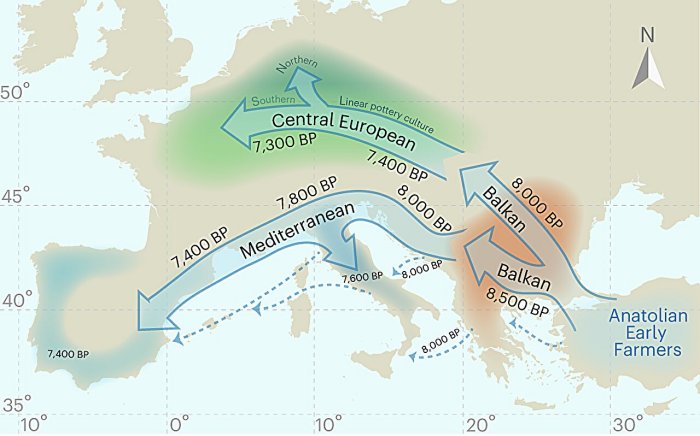
Jan Bartek – AncientPages.com – A new study suggests that the difference in height between female and male individuals in northern Europe during the Early Neolithic (8,000–6,000 years before present, bp) may have been influenced by cultural factors.
The findings indicate that height differences during this period cannot be explained by genetic and dietary factors alone.
Neolithic settlement. Credit: Adobe Stock – Elena
Culture and health are linked in the modern world; however, how this relationship evolved is unclear. Height is one indicator of health and being of a shorter height than expected based on genetics may indicate adverse environmental and/or dietary factors. Previous research has suggested that humans in the Neolithic did not reach their genetic height potential, but how this differed between regions and between sexes is unknown.
Using ancient DNA, stable isotope analysis (to indicate diet), palaeopathology (to indicate health status) and skeletal measurements, Samantha Cox and colleagues analyzed data from 1,535 Neolithic individuals dated to between 8,000 and 6,000 bp to investigate height differences and possible causes.
The skeletons were from four regions of Europe (North Central, South Central, Balkan and Mediterranean), and sex was classified based on chromosomal sex or skeletal morphology. The authors show that in North Central Europe there was high environmental stress across the sexes, but that female stature was low despite genetic scores identical to those of male individuals.
Migrations of early farmers into Europe. Credit: Nature Human Behaviour (2023). DOI: 10.1038/s41562-023-01756-w
They suggest that this may indicate a cultural preference that supported male recovery from stress. In Mediterranean populations, the difference between the sexes is reduced, which suggests that there was not a cultural preference for protecting male individuals from the impacts of environmental stress.
See also: More Archaeology News
The authors suggest that their results demonstrate the role of cultural and environmental factors in driving sex differences in stature throughout time, but acknowledge that their analyses are limited by availability of archaeological data.
The study was published in the journal Nature Human Behaviour
Written by Jan Bartek – AncientPages.com Staff Writer






